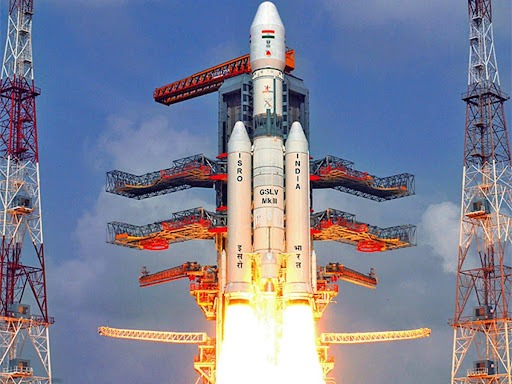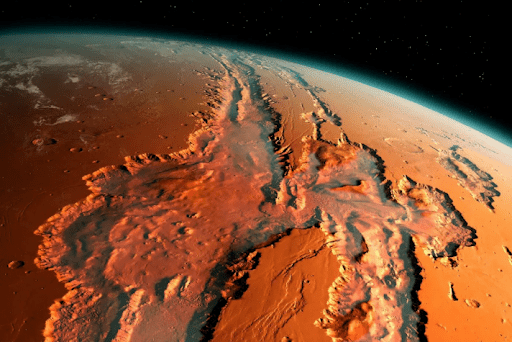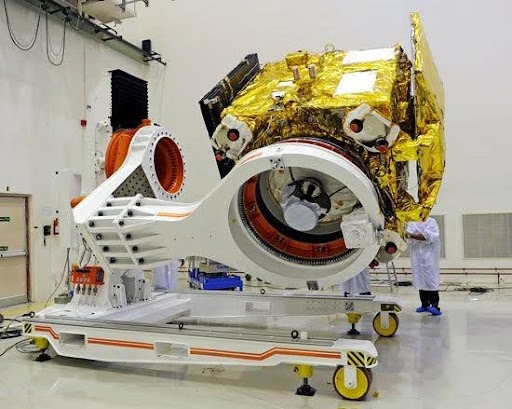India’s space program has consistently impressed the global community with its ambitious yet cost-effective missions, and the upcoming Mars Orbiter Mission 2 (MOM 2) by the Indian Space Research Organisation (ISRO) is set to continue this trend. MOM 2 aims to deploy a rover and introduce a pioneering helicopter to Mars, elevating India’s stature as a key player in space exploration and is estimated to launch in the latter half of 2024.
The successful insertion of the Mars Orbiter Mission (MOM), also known as Mangalyaan, into Martian orbit, ISRO expressed its intention to launch a second mission to Mars during the Engineers Conclave conference in Bengaluru on 28 October 2014. This second mission, referred to as MOM 2, was envisioned to utilize the LVM3 launch vehicle, which debuted on 5 June 2017 and was capable of placing MOM 2 on a direct-to-Mars trajectory, unlike the lighter PSLV XL rocket used for MOM 1.

If we Compare MOM -1 and MOM -2 – The Mars Orbiter Mission 1 (MOM 1) marked India’s successful entry into interplanetary exploration, showcasing technological prowess and generating valuable scientific data about Mars. In contrast, MOM 2 represents a significant leap forward with advanced scientific instruments like MARBLE, ARIS, MODEX, RO, EIS, and LPEX, enabling comprehensive studies of Mars’ atmosphere, weather patterns, ionosphere, dust particles, solar winds, and atmospheric composition.
Through Space India’s, Space Explorers Workshop, Rovers on Mars, Students learn why a trip to Mars is the next major goal for humanity during this interactive program. They comprehend that before humans were prepared to journey to Mars, machines played an important role in the planet’s exploration. Students understand the importance of a highly efficient communication network between the mission control centres on Earth and the rovers sent on Mars in order to make a mission successful with the aid of a very demonstrative exercise. They are able to comprehend a rover’s design and the functions it serves on the surface.
MOM 2’s importance lies in its potential to deepen our understanding of Mars, contribute significantly to planetary science, strengthen India’s position in space exploration, and foster international collaborations. The mission holds strategic significance for India, showcasing technological capabilities, advancing scientific research, and inspiring future generations towards space exploration and innovation.
History Correlation
On February 2021, ISRO announced that MOM 2 would be an orbiter-only mission, departing from the earlier consideration of a lander and rover. The new mission would utilize the LVM3 (formerly GSLV Mk III) rocket and incorporate Aerobraking techniques, allowing MOM 2 to carry over seven times the payload of MOM 1. Additionally, the perigee of MOM 2’s orbit would be reduced to about 200 kilometres above Mars’ surface.
An intriguing facet of MOM 2 is the Martian Boundary Layer Explorer (MARBLE), a sophisticated drone designed to navigate up to 100m above Mars’ surface. MARBLE will utilize advanced instruments to conduct vertical profiling of the Martian atmosphere, collecting crucial data on temperature, atmospheric pressure, composition, understanding temperature variations and atmospheric pressure across different altitudes is crucial for studying atmospheric circulation, thermal structure, and composition. Detailed wind data aids in predicting dust storms and grasping atmospheric dynamics, while analysing atmospheric composition unveils insights into Martian evolution and potential habitability.

MARBLE’s data collection will revolutionize our understanding of Martian weather patterns, vital for future human and robotic missions. Accurate weather forecasts are essential for ensuring mission safety and success. By studying the atmosphere’s composition at varying altitudes, scientists gain insights into Mars’ past, climate evolution, and potential for life. This mission builds on ISRO’s successful Mars Orbiter Mission (MOM) in 2013, which made history as India’s first interplanetary mission and the fourth globally to orbit Mars.
ISRO’s rotorcraft for MOM 2 is currently in the planning stages, set to be equipped with an array of instruments to analyze Mars’ atmospheric conditions. While navigating Mars presents challenges due to its thin atmosphere and extreme temperatures, innovative designs like airships could offer feasible solutions for sustained flight in Martian conditions. The quest for deeper insights into Mars’ atmosphere and climate through MOM 2 underscores India’s commitment to pushing the boundaries of space exploration and scientific discovery.

Payload Specification
In development is the ARIS ionosphere plasma instrument, created by the Space Satellite Systems and Payloads Centre (SPACE) at the Indian Institute of Space Science and Technology (IIST). The engineering model and high vacuum test have been completed. During a panel discussion in September 2022, it was revealed that the mission would incorporate a hyperspectral camera, a high-resolution panchromatic camera, and a radar. These instruments aim to enhance our understanding of Mars’ early stages, early crust, recent basalts, and ongoing activities like boulder falls.
The mission will feature four primary payloads:
Mars Orbit Dust Experiment (MODEX): It aims to measure the origin, abundance, distribution, and flux of dust particles at high altitudes on Mars. It will detect particles ranging from a few hundred nanometres to a few micrometres in size, traveling at hypervelocity (>1 km/s). The data collected will provide insights into the dust flux at Mars, investigate the existence of a potential ring around Mars, and determine whether the dust originates from interplanetary sources or from Mars’ moons, Phobos and Deimos.
Radio Occultation experiment (RO): It will measure neutral and electron density profiles in the Martian atmosphere. The MODEX instrument will complement the RO experiment by providing additional data to better understand the results. The RO instrument operates as a microwave transmitter at X-band frequency, contributing to our understanding of Martian atmospheric behaviour.
Energetic Iron Spectrometer (EIS): It is designed to study solar energy particles and Supra-thermal solar winds impacting Mars. The data collected will aid in understanding the processes leading to the loss of the Martian atmosphere.
Langmuir probe and Electric Field Experiment (LPEX): This payload will measure electron number, density, electron temperature, and electric field waves in the Martian environment. The experiment includes a Langmuir probe (LP) and two electric field (EF) sensors mounted on long booms. These measurements will provide crucial information about the electrical properties of Mars’ atmosphere.
As MOM 2 charts its course through the vastness of space, it will carry with it our collective hopes and dreams for a future where the stars are within our reach. Let its success inspire us to continue reaching for the stars, fuelled by the belief that together, there is no limit to what we can achieve.
—
If you like the blog, enrol your school or yourself (k-12 student) in our School Programs or Online Programs, call us at +91-74020 74020 or write to us for any query: getintouch@space-india.com

